
| This is a simplified pictorial key to the major groups of fleshy fungi. The fleshy fungi are divided into two groups based on how the spores (microscopic sexual reproductive cells) are formed. Our most common fleshy fungi, including the gilled mushrooms, boletes, puffballs, and polypores, are Basidiomycetes. The spores are formed on a structure called the basidium. The morels, truffles, and cup fungi are Ascomycetes. The spores are formed in a structure called the ascus. |
| This is a simplied "key" to the major groups of fleshy fungi based on macroscopic characters. Use the descriptions below to help you put your fungus into an appropriate group. Clicking on the link will take you to a species index of the fungi in your selected group. This will help get you closer to a possible name for your fungus. |
| For excellent dichotomous keys, please buy our book, California Mushrooms. |
| Graphics © by Louise Freedman. |
![]()
Basidiomycetes |
||
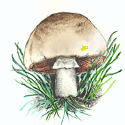 |
Agarics (Gilled Mushrooms) Mushrooms with flat, radiating bladelike projections under the cap; usually with a stipe (stalk) attached to the cap, either centrally, off-centered, or laterally; terrestrial, lignicolous, a few parasitic. |
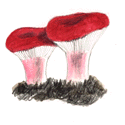 |
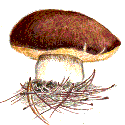 |
Boletes Fleshy mushrooms with tubes rather than gills, the tube layer usually easily separable from the cap; stipe mostly central; terrestrial, occasionally on rotting wood. |
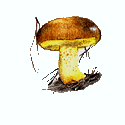 |
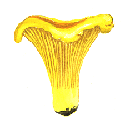 |
Chanterelles Fruiting body fleshy, vase or trumpet-shaped, the underside (fertile surface) veined, ridged or smooth; true gills absent; terrestrial. |
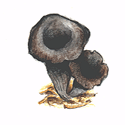 |
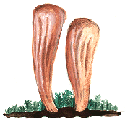 |
Club & Coral Fungi Fruiting body fleshy, simple to multi-branched, if the latter, often from a common base; spores produced on branch surfaces; usually terrestrial, occasionally on rotting wood. |
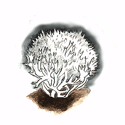 |
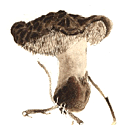 |
Teeth Fungi Fruiting bodies variously shaped; all with a fertile, lower surface composed of tooth-like projections; if mushroom-shaped, then terrestrial; those with a loosely branched structure or cushion-like, found only on wood. |
 |
 |
Polypores (Conks, Bracket Fungi, etc.) Leathery conks or brackets, typically perennial, occasionally annual and fleshy; fertile layer poroid, less commonly gill-like, labryinthoid, or tooth-like, not readily separable from the rest of the fruiting body; lignicolous or occaisonally terrestrial. |
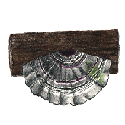 |
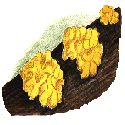 |
Jelly Fungi Fruiting bodies gelatinous in texture, convoluted, sometimes cupulate, spatulate, to ear-shaped, occasionally erect and branched mimicking coral fungi. |
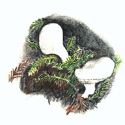 |
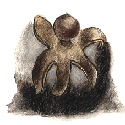 |
Puffballs, Earthstars, and Stalked Puffballs Fruiting body spherical to pear-shaped, the outer layer of some splitting into star-like rays; occasionally stalked; gleba (fertile tissue) formed internally, firm when young, powdery in age from maturing spores; spores dispersed via a pore, tear or with disintegration of the glebal covering; terrestrial or on rotting wood. |
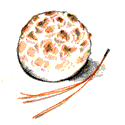 |
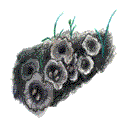 |
Bird's Nest Fungi Small, cylindrical to cup-shaped fruiting bodies, approx. 4-8 mm broad, (only 1-2 mm in Spaerobolus stellatus); a thin membrane often covering the one to several "eggs" peridioles within the cup; terrestrial or on rotting wood. |
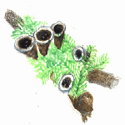 |
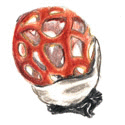 |
Stinkhorns Fruiting body consisting of stalk and slimy, malodorous fertile head, or an orange latticework basket, the interior surface coated with a fetid liquid; arising from an "egg" which when ruptured leaves a cuplike sac at the base. |
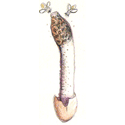 |
 |
Crust Fungi Crust fungi are characterized by relatively simple, resupinate or slightly effused-reflexed, crust-like fruitbodies that are often found on the undersides of dead branches or logs. The surface of crusts may be smooth, wrinkled, folded-labyrinthine, poroid, or spinose. |
 |
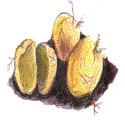 |
False Truffles Rounded, potato-like to irregularly-shaped fruiting bodies, developing underground, sometimes erumpent; gleba (fertile tissue), firm, spongy, to gelatinous; (if marbled or labyrinthoid, see true truffles); central sterile stalk (columella) absent or present; gleba at maturity not powdery. |
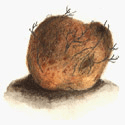 |
Ascomycetes |
||
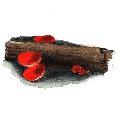 |
Cup Fungi Fruiting body, disc-shaped to cupulate, sometimes ear-like (Otidea), stipe short or absent, fertile tissue lining the upper/concave surface; drab to brightly colored; growing on wood, soil, or dung. |
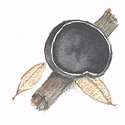 |
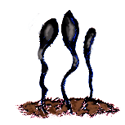 |
Earth Tongues Fruiting bodies variously shaped but frequently small, stipitate with a fertile, rounded, clavate, arrow-shaped to flattened head, in some, fertile head and sterile stalk not distinct. |
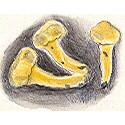 |
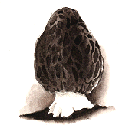 |
Morels, False Morels, and Elfin Saddles Morels--usually stipitate, cap conic, ovoid to bell-shaped; typically with longitudinal, sterile ridges and interspersed pits, nearly smooth in Verpa; margin of cap attached to stipe except in Verpa and Morchella semilibera. Elfin Saddles (False morels) usually stipitate, cap saddle to cup-shaped, convoluted or brain-like; cap margin at least partially free from stipe, the latter round, grooved to lacunose. |
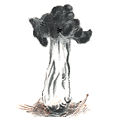 |
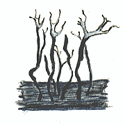 |
Flask Fungi Saprophytic and parasitic fungi, fertile tissue consisting of minute asci-lined flasks embedded in variously shaped fruiting structures; examples: branched structure of Xylaria species, parasitizing Hypomyces molds of Russula, Suillus, Boletus, and Helvella species, and slender, capped fruiting bodies of Cordyceps growing from an insect or hypogeous fungus host like Elaphomyces species. |
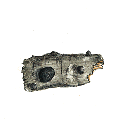 |
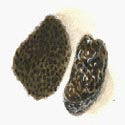 |
Truffles Fruiting body rounded, wrinkled, to irregularly lobed, developing underground (hypogeous) or partially emergent; fertile tissue internal, convoluted, folded, to marbled or simply lining a hollow interior as in the genus Sarcosphaera. |
 |